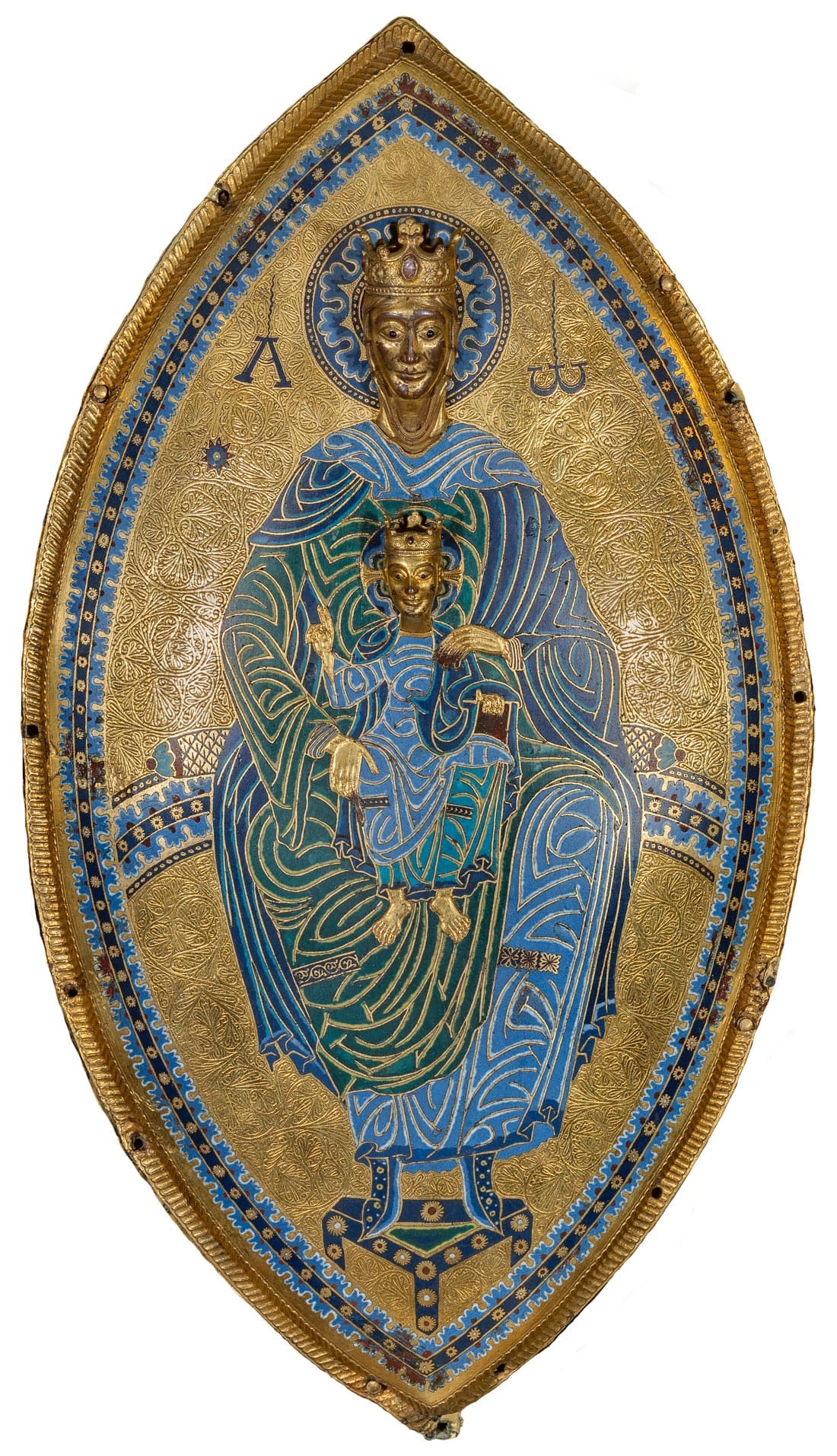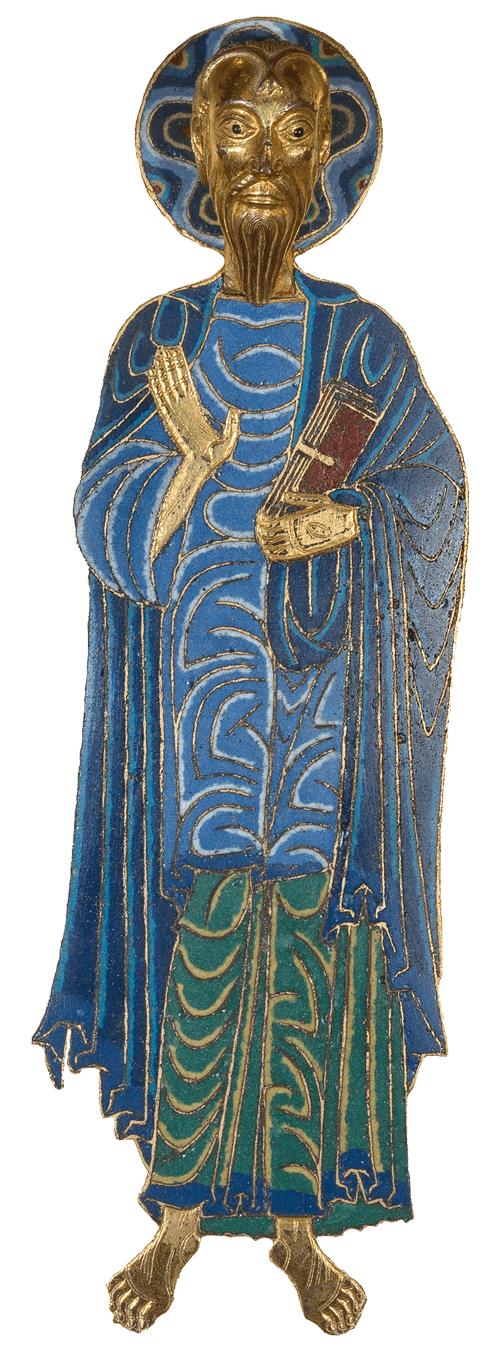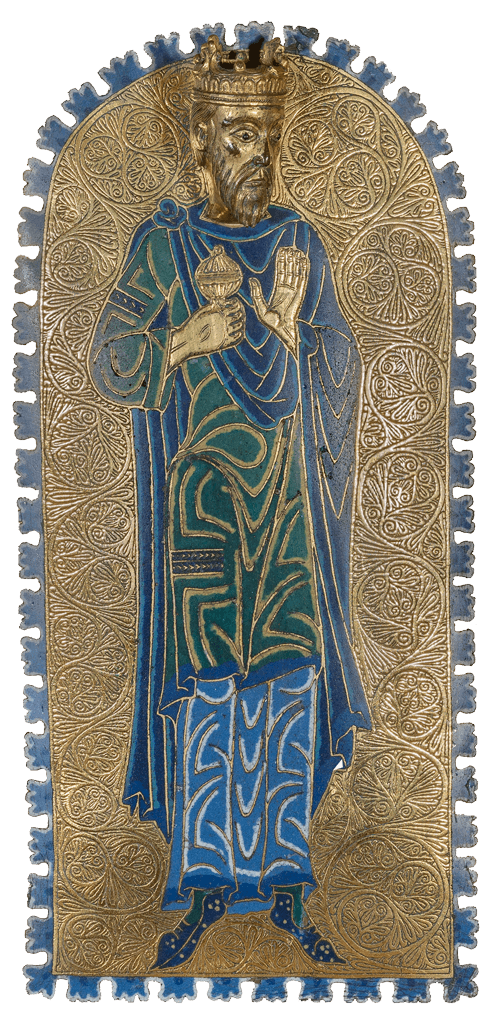Limoges Enamel
The frontal as a spiritual map
The enamelled altar frontal of Aralar is living proof of the mastery of the Limoges Workshop. This artistic beauty not only has the value of being historical evidence or the epitome of medieval enamelling, but also religious value:
it presents a specific spiritual path.

The spirituality underlying this work belongs to the Tractatus de Trinitate et Humanatione by Pedro de Artajona, also called Pedro of Paris, the first page of which is in this exhibition.
On the one hand, this bishop defended the Christian faith against the heretics who refused to accept the perfect humanity of Christ, and therefore, the Redemption of the Cross. On the other hand, he defended the thesis of the above-mentioned humanising of Christ, drawing on the mystery of Trinity.
Thus, he explains, the Son of God became a man, assuming human nature and becoming one of us, to redeem the human and make it divine, forever breaking down the chasm between God and man caused by sin.
This is precisely the proposal reflected on the enamelled frontal of Aralar: a spiritual path led by the Virgin Mary and Christ, to look at human reality with divine eyes.
In the centre of the frontal we find the Virgin, acting as the Sacred throne, a safe place and the path towards God. She presents us with the infant Jesus, God made man who accepts everything the human condition involves.

Around him are the apostles, witnesses of God and messengers of this Good News. In the corners of the central part we will find the evangelists, followers of Jesus who accepted the gift of faith and who travel this path.


At the bottom left the Magi profess their devotion to God as a child, while at the bottom right the scene of the Annunciation is presented. This is the key moment when Salvation began, thanks to the Incarnation of God in the Virgin Mary, the central theme of the mandorla.

